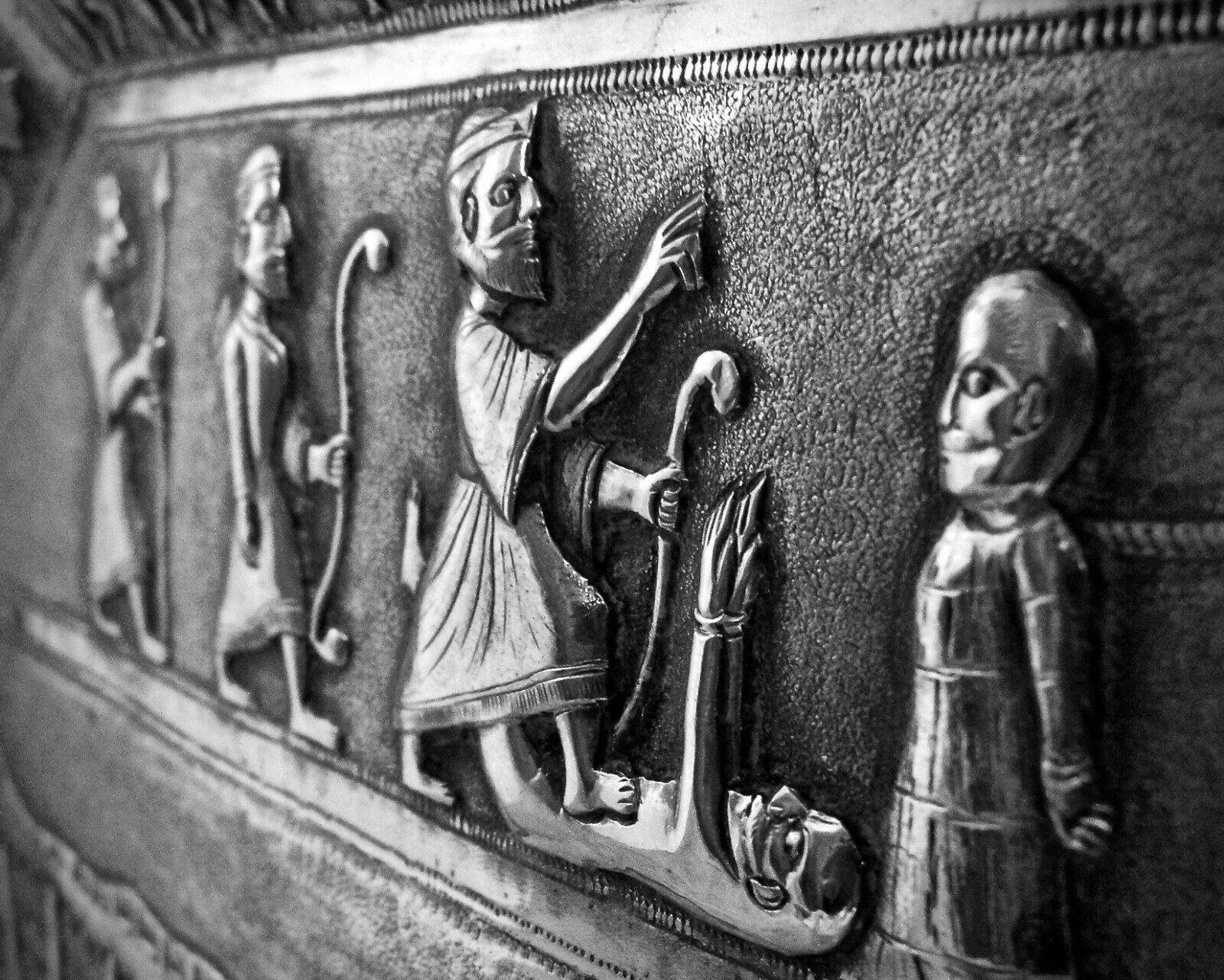-40%
An Antique Indian Parsi Sterling Silver Tray, Extremely Rare
$ 3669.6
- Description
- Size Guide
Description
Presented is an exceptionally rare, circa 1880, Parsi sterling silver tray decorated with tokens of the glorious history of their homeland, the Persian Empire.Following the invasion and subsequent Islamization of Persia, those who did not wish to relinquish their Zoroastrian faith fled to India. These refugees became known as the Parsis, and soon their community began to flourish and economically prosper in Bombay.
In the 1800s, when possession of silverware became associated with one's social class and image, the affluent Parsi community of Bombay began commissioning items with old Persian, pre-Islamic, motif.
Given the relatively small population of the Parsis (an estimated 140,00 around the world), and a disproportionately small number of silversmiths engaging in such silverware (only 3 in Bombay in 1900), Parsi silver is seldom encountered on the antique silver market. And, one as profusely chased and embossed in high relief as this example is quite a rarity.
The decoration of the tray on the upper panel is inspired by the Achaemenid relief of Dariush the Great (522-486 BC), at Bistoon, in the Kermanshah province. Dariush is seen vanquishing his rivals and enemeies with his Immortal Guards behind him. The right hand of the crowned Dariush is risen as his pledge of allegiance to Ahura Mazda who has bestowed upon him the title of the King of Kings of the Persian empire.
In the middle, there are depictions of the three major capitals of the Achaemanid and Sassanid dynasties: Pasargad, Persepolois, and Taq Kasra.
The lower portion represents the silversmith's rendition of the Bishapur relief. The scene depicts the finale of the 18 year war (242-269 A.D) between the Sassanid King, Shapur I, and the Roman Emperors Gordian III and Valerian. Shapur is shown on the horseback with Gordian underneath the horse, symbolizing the defeat of the Roman army and demise of the emperor. The next Roman emperor, Valerian, is shown as a captive standing behind Shahpur following the last war. To the front of Shapur, Gordian's praetorian prefect, Philip, is seen Kneeling and begging to be spared.
The repousse work is in high relief and the chasing is exquisite. The field of the tray is concaved to yeild a three dimensional effect.
Marked twice to verso "STERLING".
Excellent condition save for the expected age-wear.
Length: 18 1/2"
(47 cm)
Weight: 53.277 Troy Ounces
(1.650 Kg)
Get images that
make Supersized seem small.
THE simple solution for eBay sellers.
Track Page Views With
Auctiva's FREE Counter


















